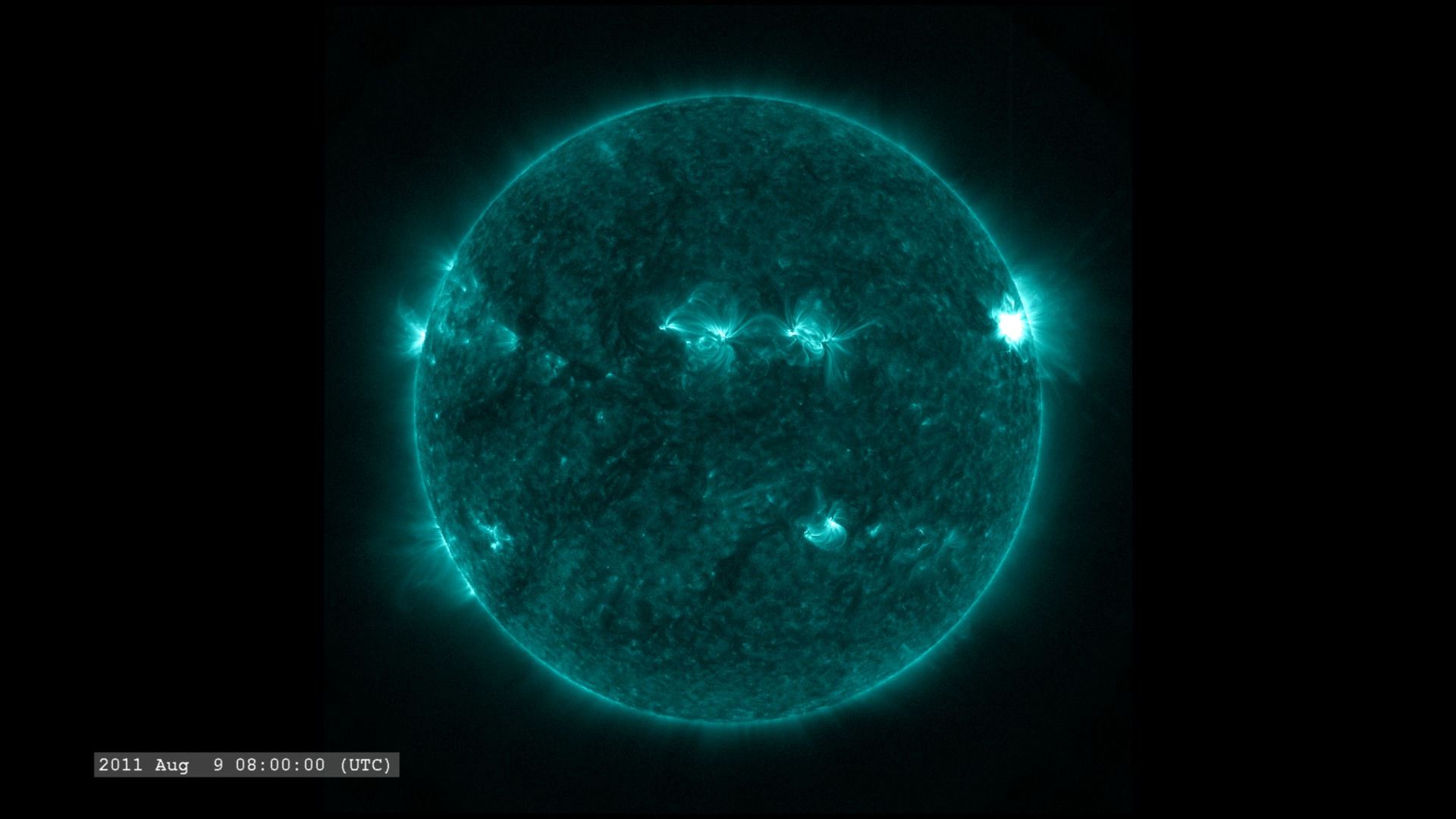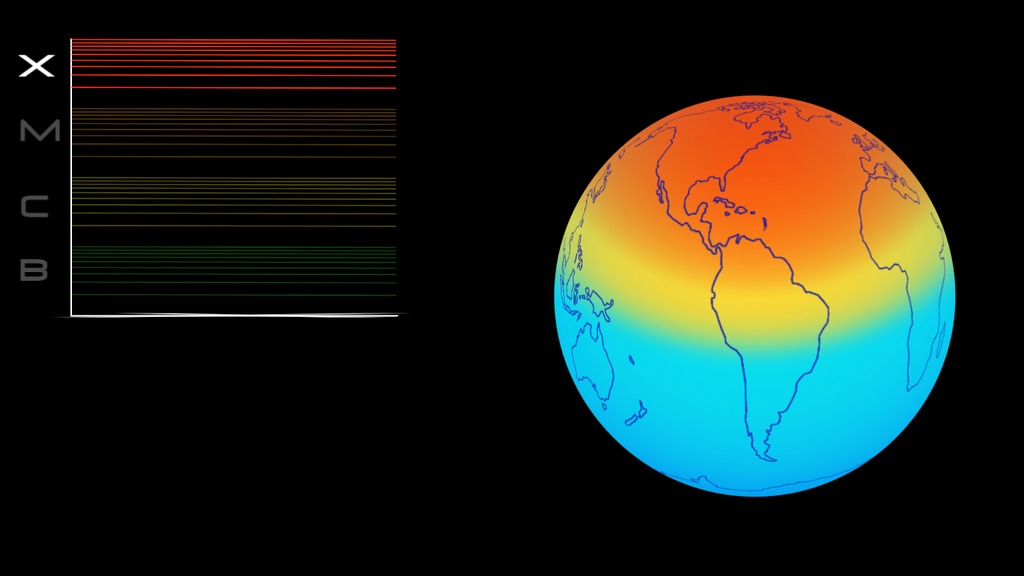Sun Unleashes X6.9 Class Flare on August 9, 2011
On August 9, 2011 at 3:48 a.m. EDT, the sun emitted an Earth-directed X6.9 flare, as measured by the NOAA GOES satellite. These gigantic bursts of radiation cannot pass through Earth's atmosphere to harm humans on the ground, however they can disrupt the atmosphere and disrupt GPS and communications signals. In this case, it appears the flare is strong enough to potentially cause some radio communication blackouts. It also produced increased solar energetic proton radiation — enough to affect humans in space if they do not protect themselves.
As of March 2014, this flare is the largest of solar cycle 24.

The August 9th, 2011 X6.9 flare as seen by the Solar Dynamics Observatory (SDO) at 8:05UT in a blend of 171 and 131 angstrom light.
Credit: NASA/GSFC/SDO

The August 9th, 2011 X6.9 flare as seen by the Solar Dynamics Observatory (SDO) at 8:05UT in a blend of 171 and 131 angstrom light. Cropped.
Credit: NASA/GSFC/SDO

The August 9th, 2011 X6.9 flare as seen by the Solar Dynamics Observatory (SDO) at 8:05UT in 131 angstrom light.
Credit: NASA/GSFC/SDO

The August 9th, 2011 X6.9 flare as seen by the Solar Dynamics Observatory (SDO) at 8:05UT in 171 angstrom light.
Credit: NASA/GSFC/SDO

The August 9th, 2011 X6.9 flare as seen by the Solar Dynamics Observatory (SDO) at 8:05UT in 193 angstrom light.
Credit: NASA/GSFC/SDO

The August 9th, 2011 X6.9 flare as seen by the Solar Dynamics Observatory (SDO) at 8:05UT in 304 angstrom light.
Credit: NASA/GSFC/SDO

The August 9th, 2011 X6.9 flare as seen by the Solar Dynamics Observatory (SDO) at 8:05UT in 335 angstrom light.
Credit: NASA/GSFC/SDO

The August 9th, 2011 X6.9 flare as seen by the Solar Terrestrial Relations Observatory (STEREO) Ahead spacecraft at 8:06UT in 304 angstrom light. STEREO A's position ahead of the Earth gives it a different perspective of the sun, so the flare appears closer to the center of the disk instead of at the edge.
Credit: NASA/GSFC/STEREO

The August 9th, 2011 X6.9 flare as seen by the Solar Terrestrial Relations Observatory (STEREO) Ahead spacecraft at 8:06UT in 195 angstrom light. STEREO A's position ahead of the Earth gives it a different perspective of the sun, so the flare appears closer to the center of the disk instead of at the edge.
Credit: NASA/GSFC/STEREO

The August 9th, 2011 X6.9 flare as seen by the Solar Terrestrial Relations Observatory (STEREO) Ahead spacecraft at 8:06UT in 171 angstrom light. STEREO A's position ahead of the Earth gives it a different perspective of the sun, so the flare appears closer to the center of the disk instead of at the edge.
Credit: NASA/GSFC/STEREO
Credits
Please give credit for this item to:
NASA's Goddard Space Flight Center. However, individual images should be credited as indicated above.
-
Producer
- Scott Wiessinger (USRA)
-
Writer
- Karen Fox (ADNET Systems, Inc.)
Release date
This page was originally published on Tuesday, August 9, 2011.
This page was last updated on Wednesday, May 3, 2023 at 1:53 PM EDT.

